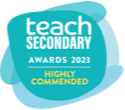How will these resources help you?
Mass migration in recent years has led to more than 50 per cent of the global population living in urban areas. Recipient cities have always been sites of cultural exchange and human diversity; however, this rapid urbanisation has led to a growth in literature on ‘super-diversity’. With this mix comes the challenge of 'social cohesion'. While there is no fixed definition, terms such as 'belonging', 'equality' and 'integration' are all used. Students studying topics on urban issues, diverse places, regeneration, migration and identity, and globalisation must consider the challenges of achieving social cohesion as the demographics become more complex. The layers are far more complex than the conventional descriptions (the local and the migrant) of diverse societies suggest. These resources recognise that, offering solutions at different levels, from the neighbourhood to central government. They provide global case studies and highlight those that have achieved success, addressing AO3 at GCSE and AO2 at A-level. The complexity of the arguments put forward also lend themselves well to undergraduates.
Challenging conventional approaches
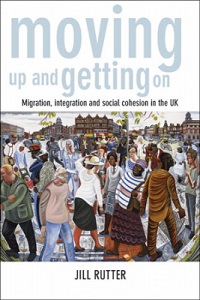
Moving Up and Getting On: Migration, Integration and Social Cohesion in the UK
by Jill Rutter, published by Policy Press, (2015), 9781447314622
Rutter refreshingly challenges widespread thinking on integration and social cohesion. She sees most contemporary research into the topic based on Muslims and Islamophobia, and states that we must look beyond this to the roles that government, NGOs, local public services, and employers must play in wider social cohesion. Rutter considers the need for neighbourhood ‘transversal space’ which is not segregated and where migrants are visible and can mix with long-settled residents to dispel stereotypes and perceived hostilities. This book calls for political leadership to do this. Much current research focuses on the economic outcomes of migrants, rather than the success of society in socially integrating them (something far more difficult to measure). This is a good resource for supporting students in assessing the success of urban regeneration schemes and analysing how schemes solve this issue.
Belonging
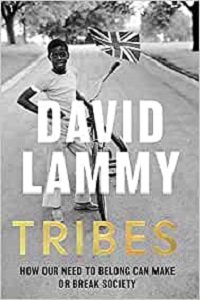
Tribes: How Our Need to Belong can Make or Break Society
by David Lammy, published by Constable, (2021), 9781472128720
Lammy argues that by our very nature, humans inherently search for belonging. The book begins with his DNA test confirming genetic links with Sierra Leone, Niger and South Africa, and follows with a biographical account of his experiences growing up in, as he sees it, a British tribal society. His social and political analysis identifies Brexit as driven by xenophobia – he writes: 'Diversity, immigration and technological progress can be hugely positive, but when they break down shared ways of life and social cohesion, it is understandable that people get defensive.' His analysis is critical of British society and the political system, citing the handling of Grenfell Tower headed by white, middle-class men. He goes on to provide a range of solutions to instil this sense of belonging, albeit largely political. These include compulsory National Service, a new British Constitution, and more mayors with devolved powers. Writers of some of the other resources included here would disagree and see cohesion coming from the bottom up, through shared social space. Good background reading on diverse communities that would serve any teacher or student well when covering urban issues and challenges.
Diverse Cities
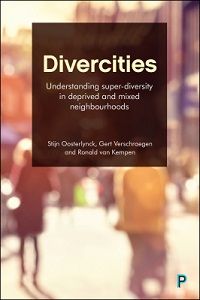
Divercities: Understanding Super-Diversity in Deprived and Mixed Neighbourhoods
by Stijn Oosterlynck, Gert Verschraegen and Ronald van Kempen (edited by), published by Policy Press, (2020), 9781447338185
Oosterlynck et al provide an international comparison between cities and argue that diversity and multiculturalism do not deserve the negative connotations by which they are often labelled. They recognise that many cities have moved beyond multiculturalism, and onto ‘super-diversity’ – many other factors come into play, such as socioeconomic status, legal position, education, age and gender, making the 'local/migrant' labels unuseable. (Chapter 4 is important here, as the writer examines the term ‘others’.) Later in the book, even the term ‘hyper-diversity’ is introduced. Like Rutter, the writer identifies shared space as essential in achieving social cohesion, and this book draws on case study cities all over the world to assess how they live with 'super- diversity'. It is a book suitable for teachers and students covering urban change and regeneration, and the impacts of migration.
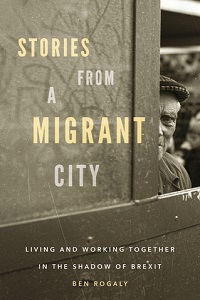
Stories from a migrant city: Living and Working Together in the Shadow of Brexit
by Ben Rogaly, published by Manchester University Press, (2020), 9781526131737
This resource supports teachers when considering relationships between place, migration, and urban change. Rogaly emphasises that places (in this case Peterborough) are ‘porous, extroverted, and always connected to other places’, as he moves the reader away from the all-too-common oversimplification in research of the ‘local/migrant’. He challenges this binary concept by identifying ‘non-elite cosmopolitanism’; finding evidence that working-class communities (which do not fit the stereotype of homogenised and white), negotiate, live with, and embrace difference rather than being threatened by it. Like Divercities, this certainly gives a positive outlook on social cohesion in a diverse community such as Peterborough. This book helps support students with exam questions on the impacts of migration in urban environments at GCSE and A-level (where students can draw on evidence from his ethnographic research), and the more complex analysis required for undergraduates. All will benefit from being assured that ‘non-elite cosmopolitanism’ is alive and well.
Further materials
Models of diversity and inclusion, published by Eurocities, (2022)
Access this resource
Immigration, Diversity and Social Cohesion by Dr Neli Demireva, published by The Migration Observatory, COMPAS, University of Oxford, (2019)
Visit this website
The 10 Most Multicultural Cities in the World by Marcelina Morfin, published by Culture Trip, (2019)
Read this article
Building cohesive communities: An LGA Guide, published by Local Government Association, (2019)
Access this resource
David Newell is Head of Geography at Millais School in Horsham, West Sussex. He has held the GA’s Secondary Geography Quality Mark since 2015, and has worked as a Specialist Leader in Education, advising schools on improving their Geography provision.
Text © David Newell, 2022.
Text © David Newell, 2022.


